
Standard Issue Cavalry Sabers : Trooper's swords
During, and some years after the Belgian revolution (1830), the weapons in use by the Belgian forces were all from foreign origin. In fact, as far as sabers go, almost all saber types ever used by Belgian cavalry troopers were either foreign models or slight modifications of these models.
Here they are, presented in chronological order :
English model
Leconte mentions that an English saber was used in our country for about a decade, but does not specify the corresponding model. He describes this saber as having :
Based on this description, and the corresponding time period, this could be the English 1821 pattern Light Cavalry Saber, though Leconte mentions that the blade has no fullers.
Heavy Cavalry Saber Dutch pattern nb 2/3
This is the Dutch model, without any modifications. According to F. Pirron's article, it was in use by Cuirassiers before the advent of the Belgian model. However, the article calls this saber both nb 2 and nb 3, while the nb 2 and 3 sabers found in the Army Museum, do not correspond to the pictures in Pirron's article.
Total weight, scabbard included : 3.197 kg
Total length : 116 cm
Light Cavalry Saber Dutch pattern nb 3
This is the Dutch model, without any modifications. It was in use by the train squadron 'for a long time'.
The blade is larger, shorter (86 cm) and shows more curvature (5.5 cm) than that of the Montmorency saber. The grip is very similar to that of the Montmorency saber, with 17 grooves. Total length of 99 cm. Steel scabbard with wooden inserts.
Total weight, scabbard included : 2.530 kg
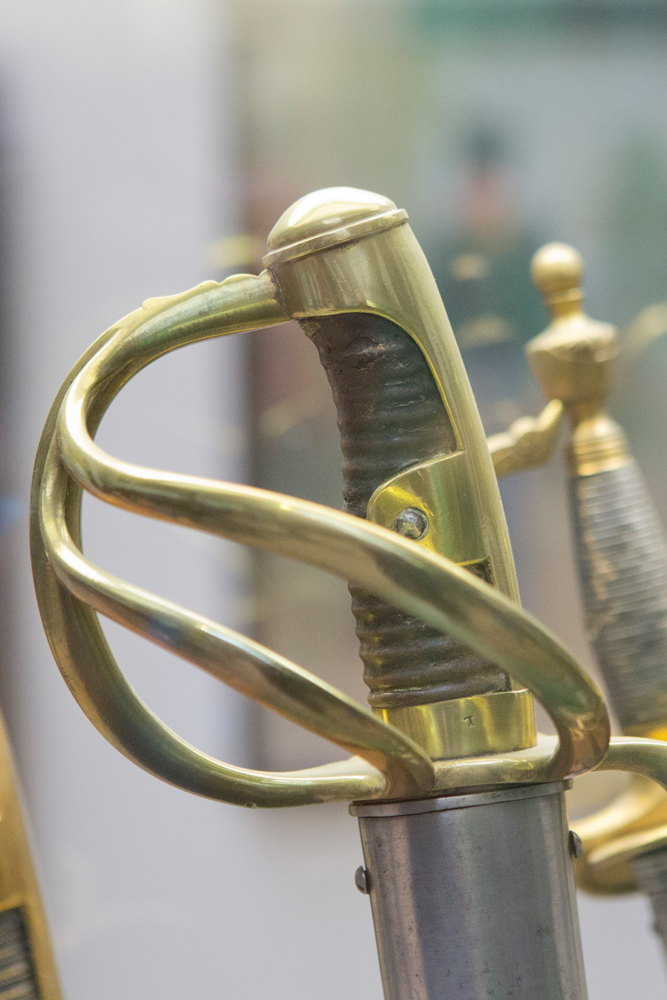
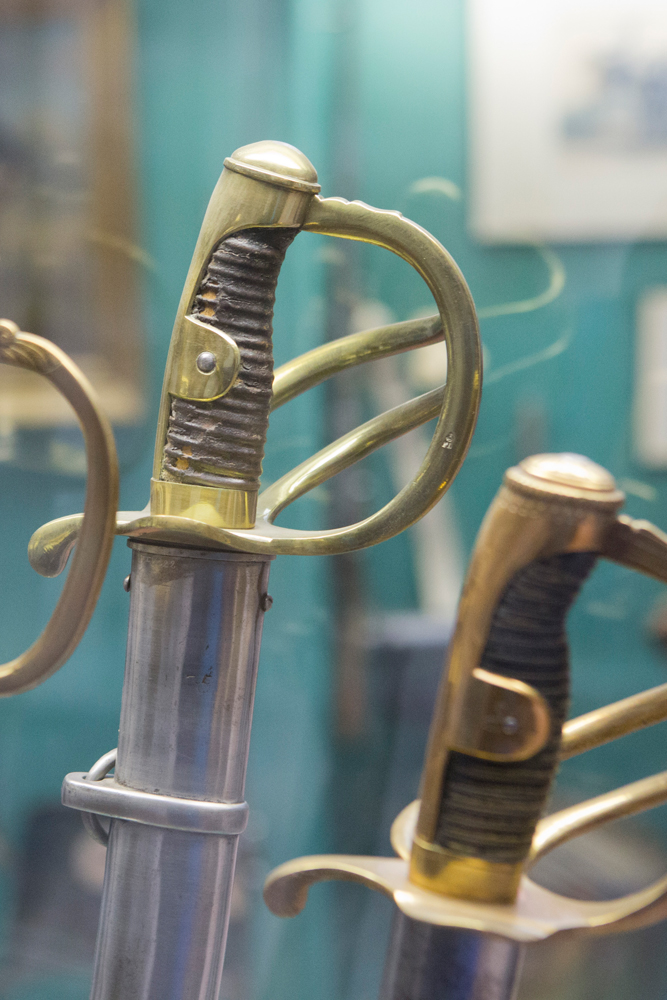
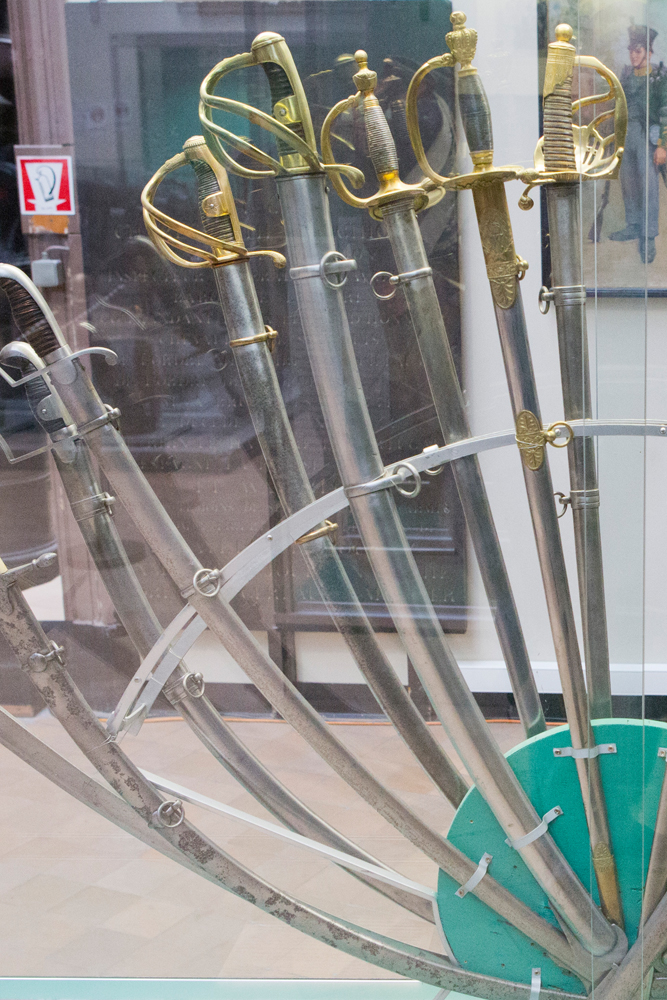
1802 pattern Montmorency Cavalry Saber
This saber was used by both the light cavalry and the artillery even after they were given the French 1822 pattern light cavalry saber in 1834.
Blade with ricasso, two hollow sides, but no fullers. It is 89 cm long and has a curvature of 3.6 cm. Brass hilt, with three bars. The main bar is prolongated into a quillon and supports a small counterguard. Beaded pommel which extends along the back of the grip and sports two ears, which are connected, through the grip, by a rivet. Wooden grip with thin spirals, bound in twine and covered in leather.
Steel scabbard, with wooden inserts and two bands with loose ring. Asymmetrical shoe.
Total weight, scabbard included : 1.890 kg
This scabbard was 'later' replaced by a steel one, the total weight, scabbard included going up to 2.180 kg
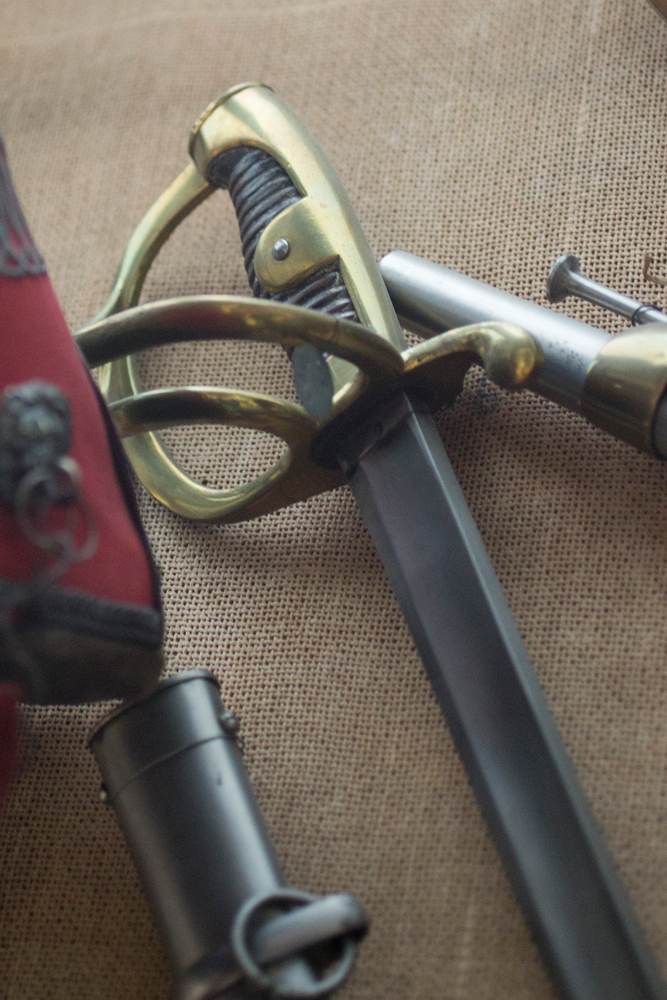

The royal decree of July 4th 1835 attributed this saber, with a gilt hilt, to the officers attached to the superior staff of the Civic Guard.
French pattern An XI Heavy Cavalry Saber
This is the French model, without any modifications.
Straight double fullered blade, 97.45 cm long and 3.6 cm wide, point in line. Brass hilt with four bars. The main bar is attached to the pommel via a hooked pin and prolongated, on the opposite side into an edged counterguard. The other three bars are thicker where they are attached to this counterguard. Beaded pommel in the form of half an olive. Wooden grip bound in twine and covered in leather, then bound with twisted brass wires. Brass ferrule at the base of the grip.
Steel scabbard, with wooden inserts and two bands with loose ring. Symmetrical shoe.
Total weight, scabbard included : 3.197 kg
Total length : 116 cm
This saber was used by the Cuirassier as of November 20th 1830, and by the mounted Gendarmerie as of April 15th 1832.
French 1822 pattern Light Cavalry Saber
This is the French model, without any modifications.
Curved blade, 92.3 cm long with a wide fuller on each side and a thin fuller on each side near the back edge. Curvature of 3.6 cm. Point in line with the back edge. Brass hilt, with three bars. The main bar is attached to the pommel via a hooked pin and prolongated, on the opposite side into an edged counterguard. Wooden grip bound in twine and covered in veal leather, then bound with twisted brass wires.
Steel scabbard, with wooden insert and two bands with loose ring. Asymmetrical shoe.
Total weight, scabbard included : 2.055 kg
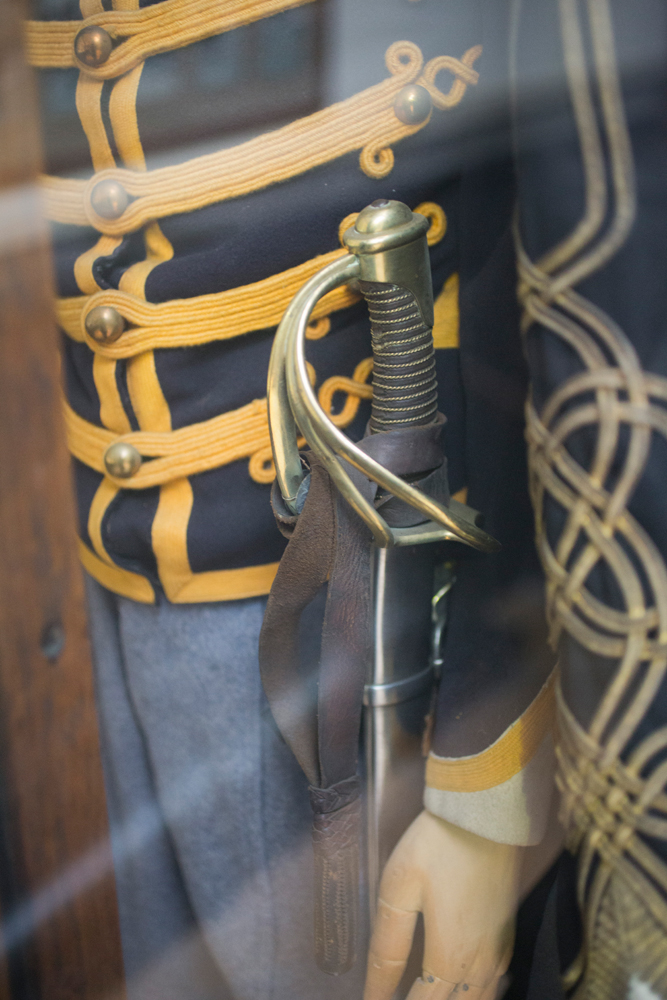
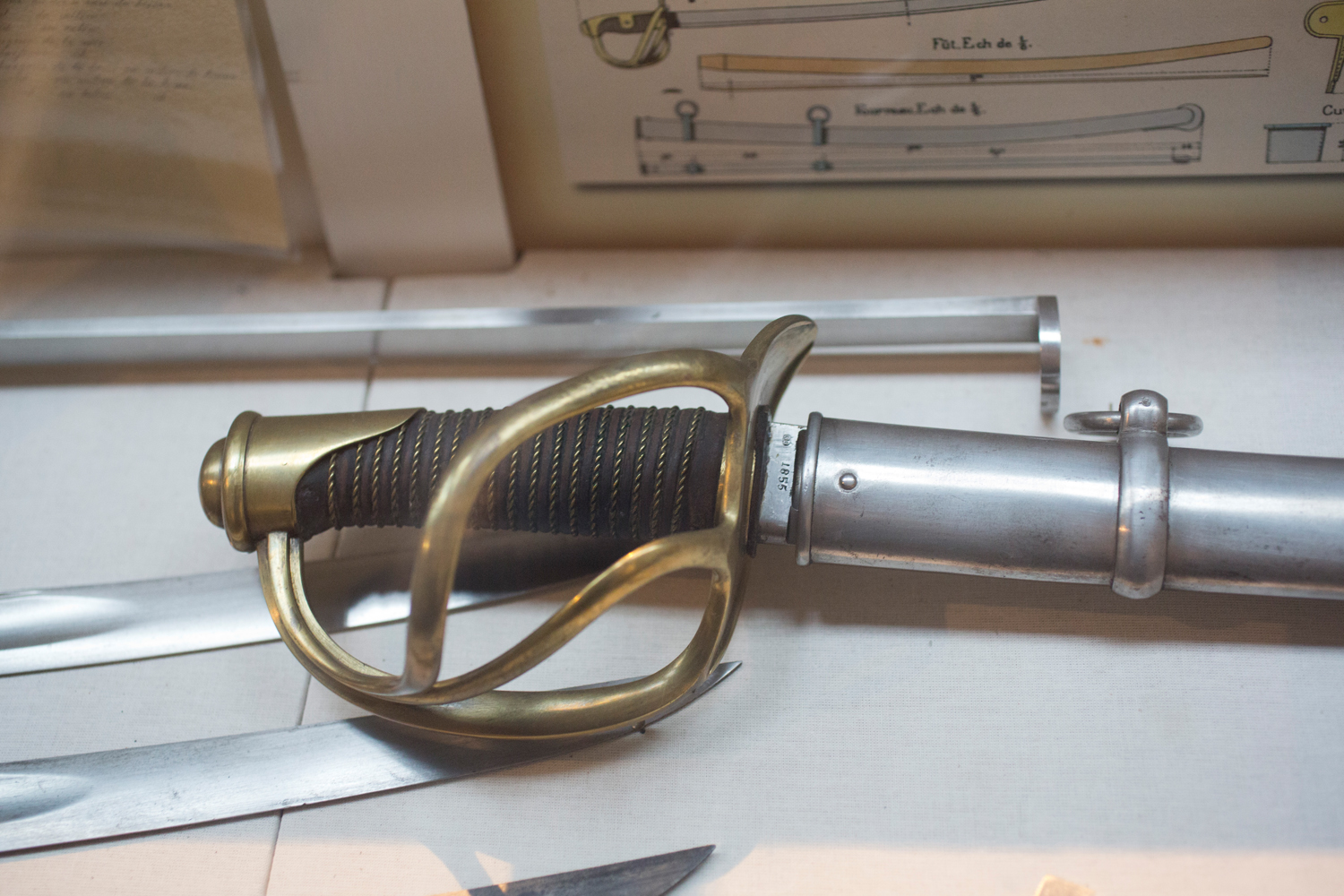
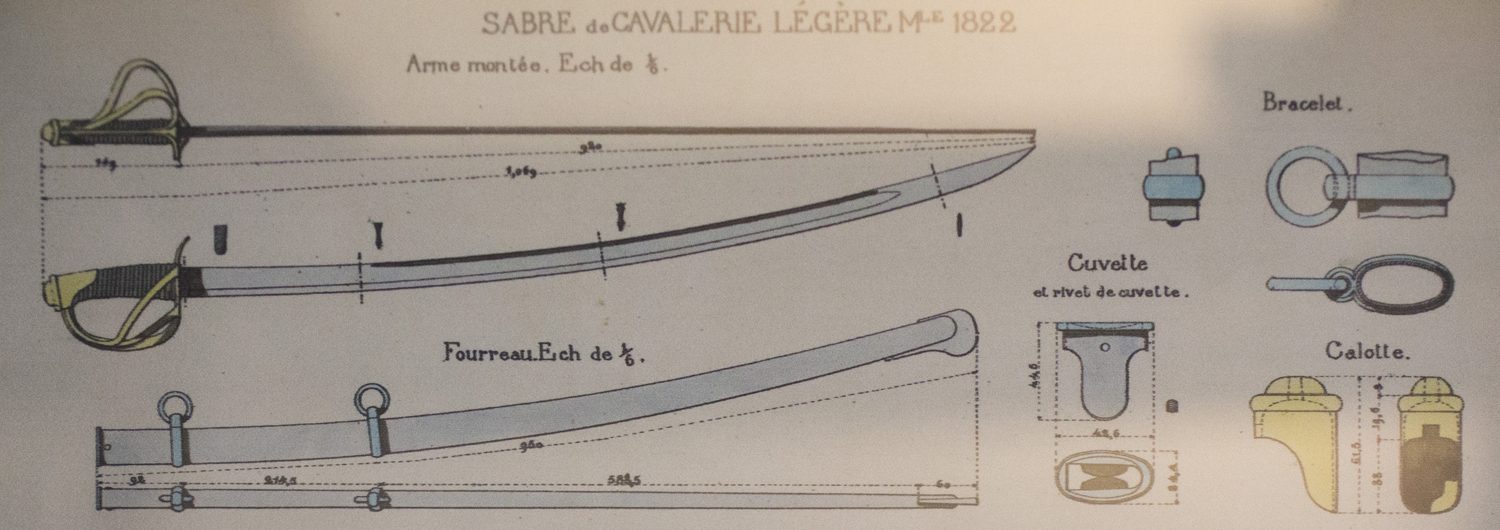
This saber was used by the artillery, light cavalry and Guides as of 1834.
French 1822 pattern Guide Saber
This is the French 1822 pattern Saber for 'de ligne' Cavalry, without any modifications
Curved blade, 97.45 cm long with a two fullers. The curvature of is a little inferior to that of the 1822 pattern light cavalry saber. Brass hilt, with four bars. Pommel in half olive. Wooden grip bound in twine with big spaces between the turns, covered in veal leather, then bound with twisted copper wires.
Steel scabbard, without wooden insert. Mouthpiece with spring mechanism and two bands with loose ring. Asymmetrical shoe.
Total weight, scabbard included : 2.200 kg
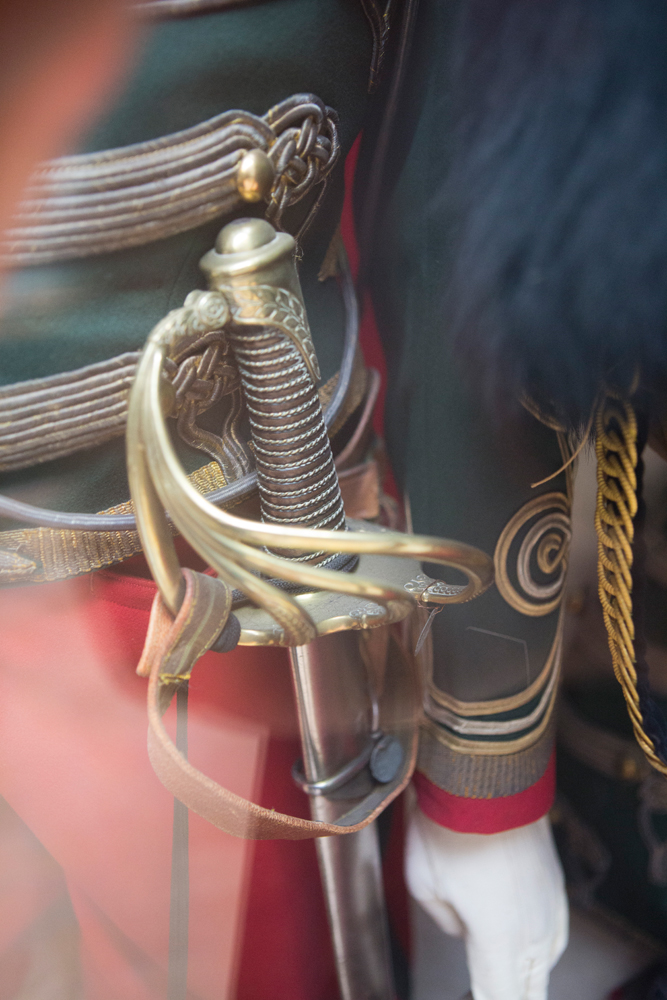
This saber was attributed to the guides as of 1841 because it was more appropriate than the 1822 pattern Light Cavalry Saber , taking into account that the guide's horses were bigger than that of other outfits.
Cuirassier Intermediary Saber
This is a variation presented by F. Piron and not mentioned by Leconte. Though it is very similar to the 1852 Cuirassier's saber, is came into being much earlier, in 1840. It is based on both the French and Dutch models just presented, with :
Total weight, scabbard included : 2.790 kg
Total length : 115,5 cm
1852 pattern Cuirassier Saber
This is the French An XI pattern Heavy Cavalry Saber with :
Total weight, scabbard included :2.150 kg according to Piron and 3.197 kg according to Leconte
Total length : 115,5 cm
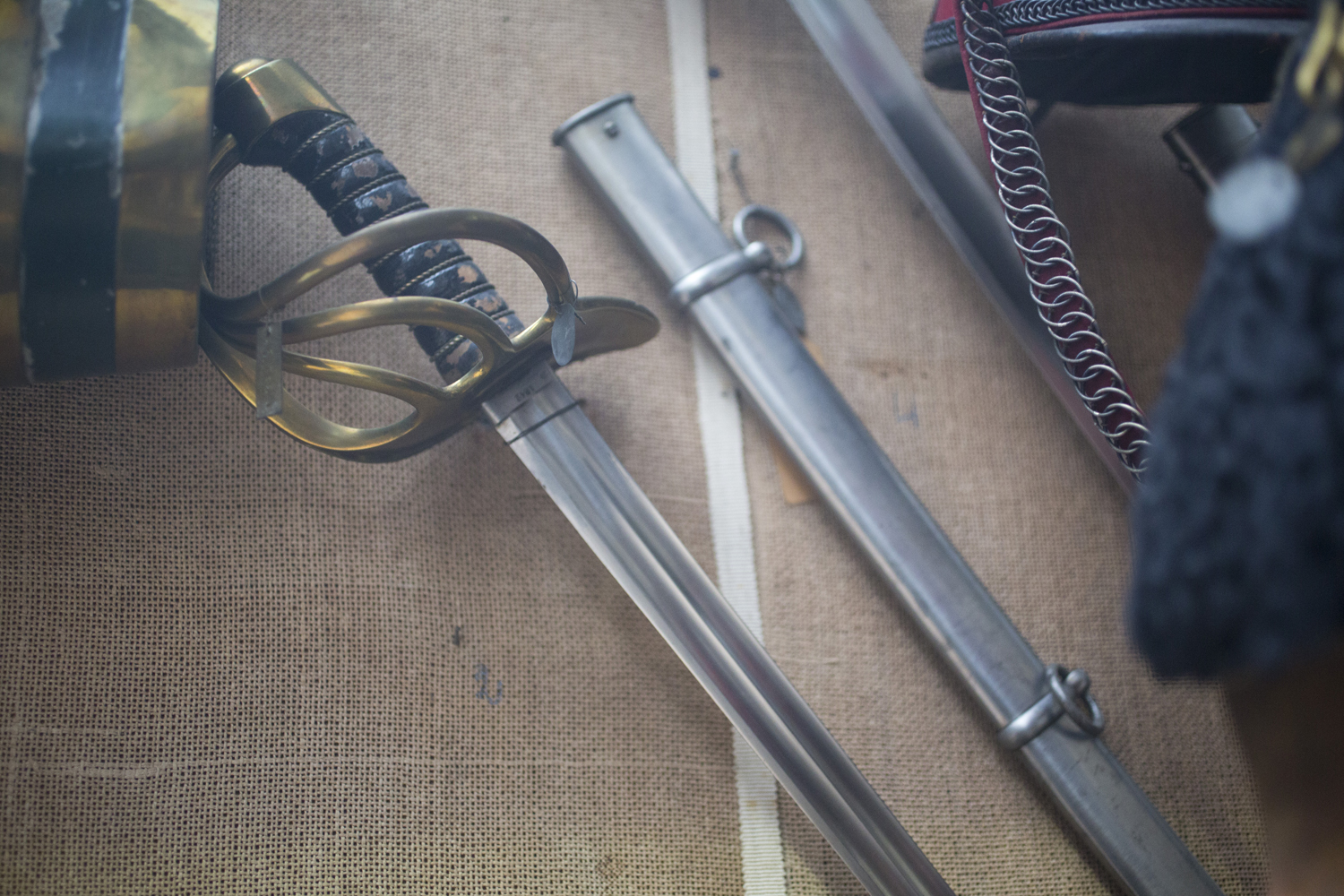
1852-1873 pattern Gendarmerie Saber
This is a modification of the 1852 pattern Cuirassier Saber
Total weight, scabbard included : 2.290 kg
Total length : 115 cm
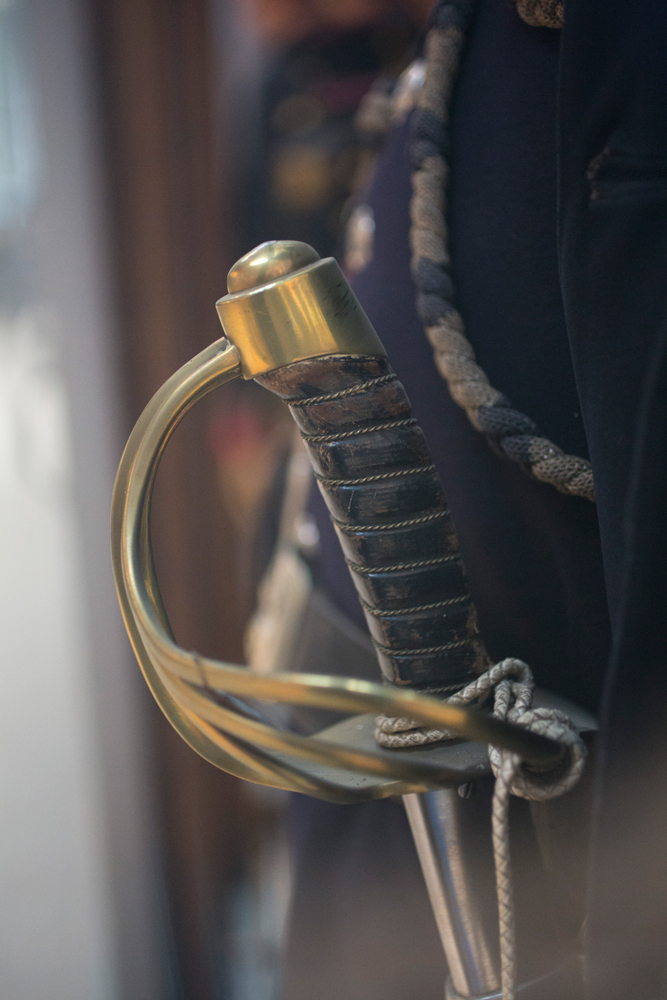
1822-1873 pattern Guide Saber
This saber differs from the French 1822 pattern for 'de ligne' Cavalry only in that :
Total weight, scabbard included : 2.060 kg
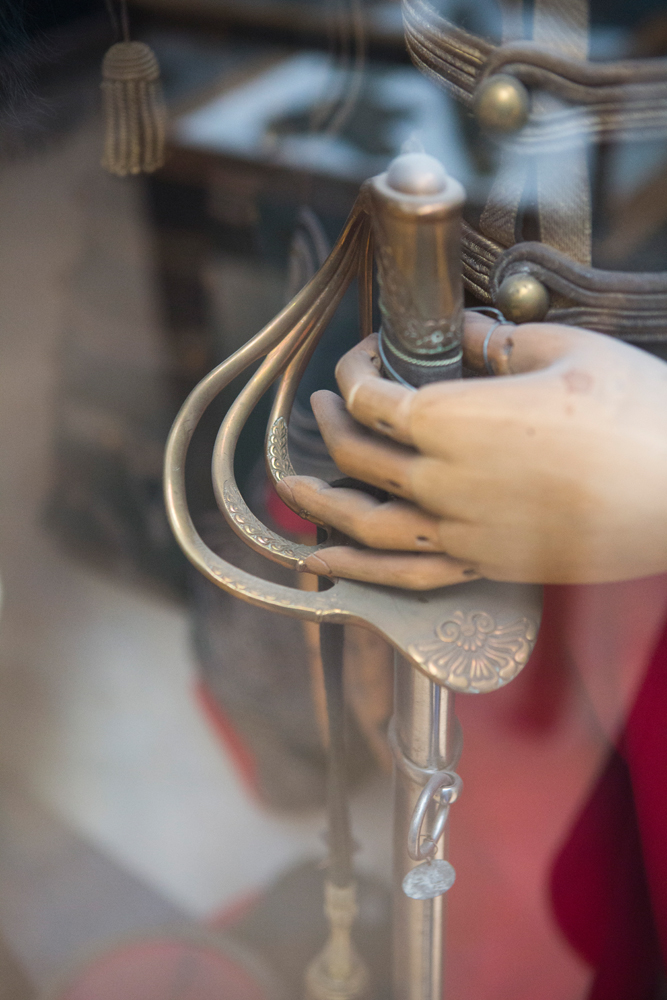
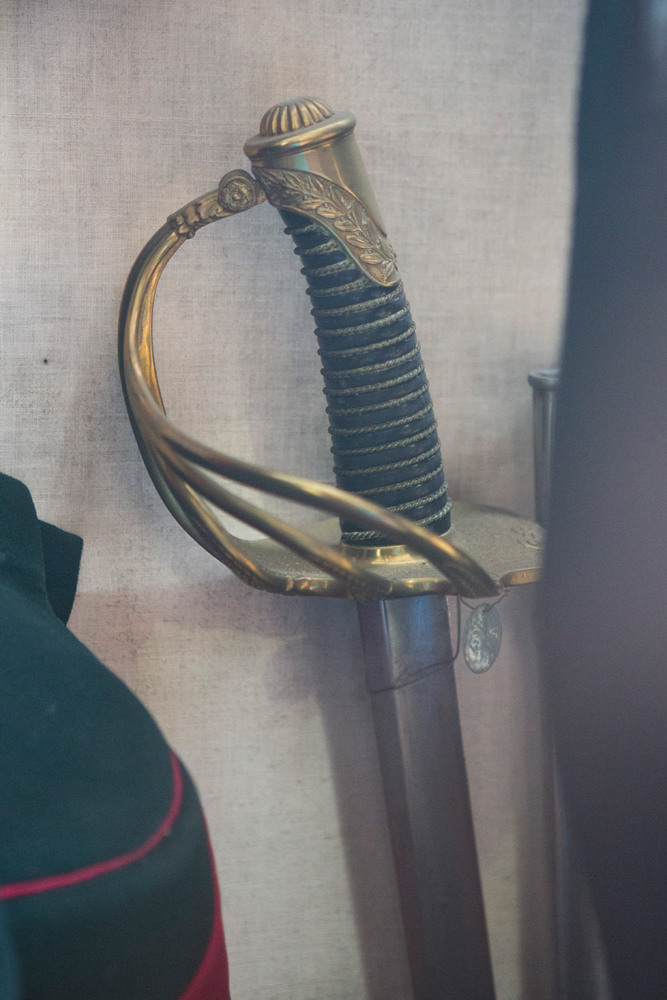
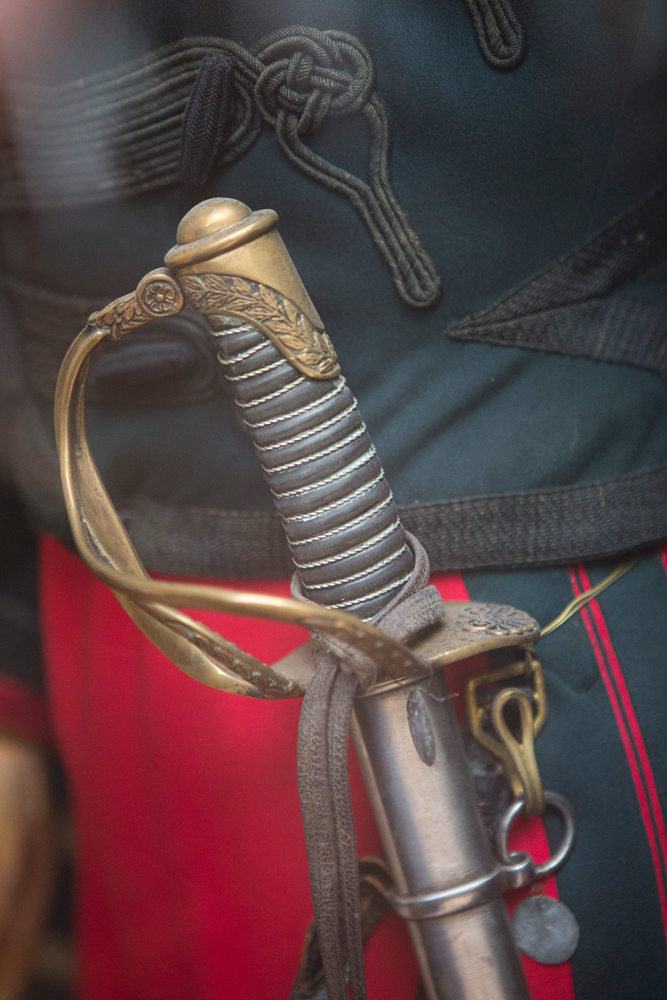
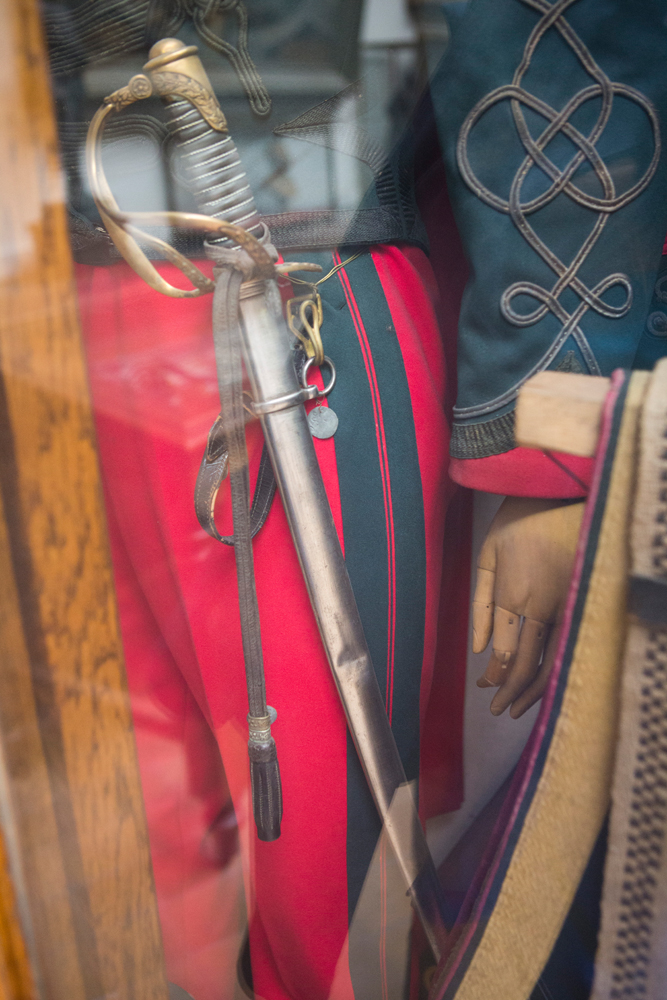
1822-1883 pattern Light Cavalry Saber
Is a 1822 pattern Light Cavalry Saber with a square grip. The lower scabbard band is absent and the upper one now has both loose ring and mortise.
Total weight, scabbard included : 2.103 kg
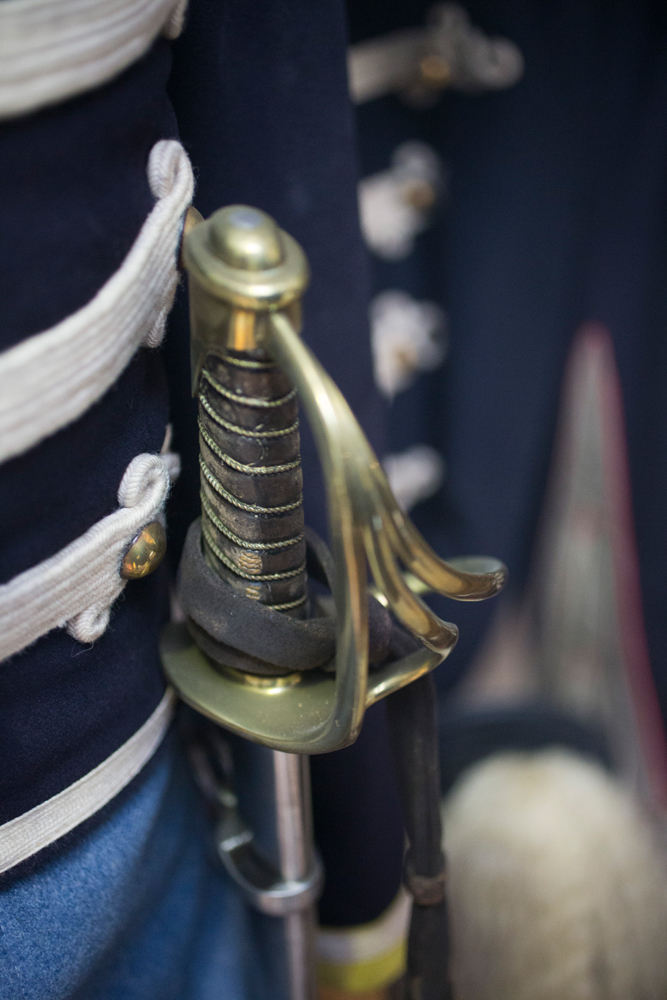
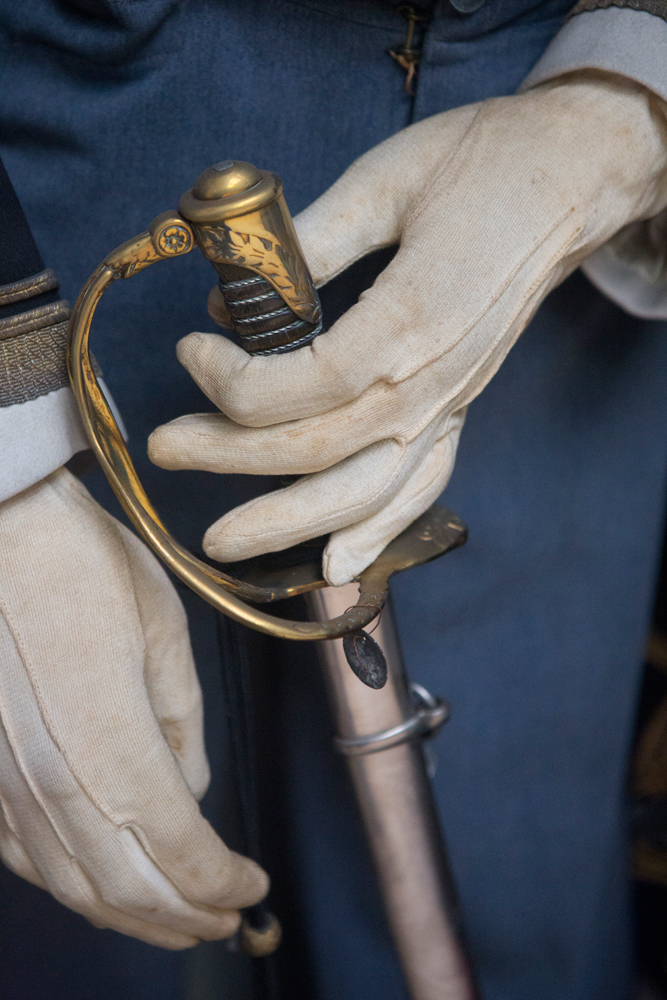
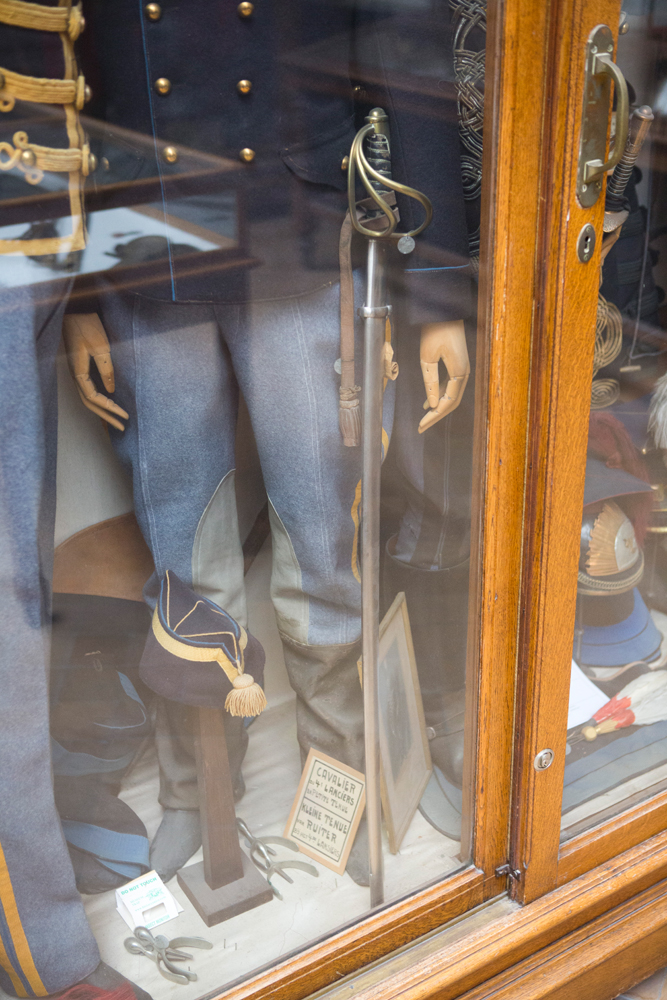
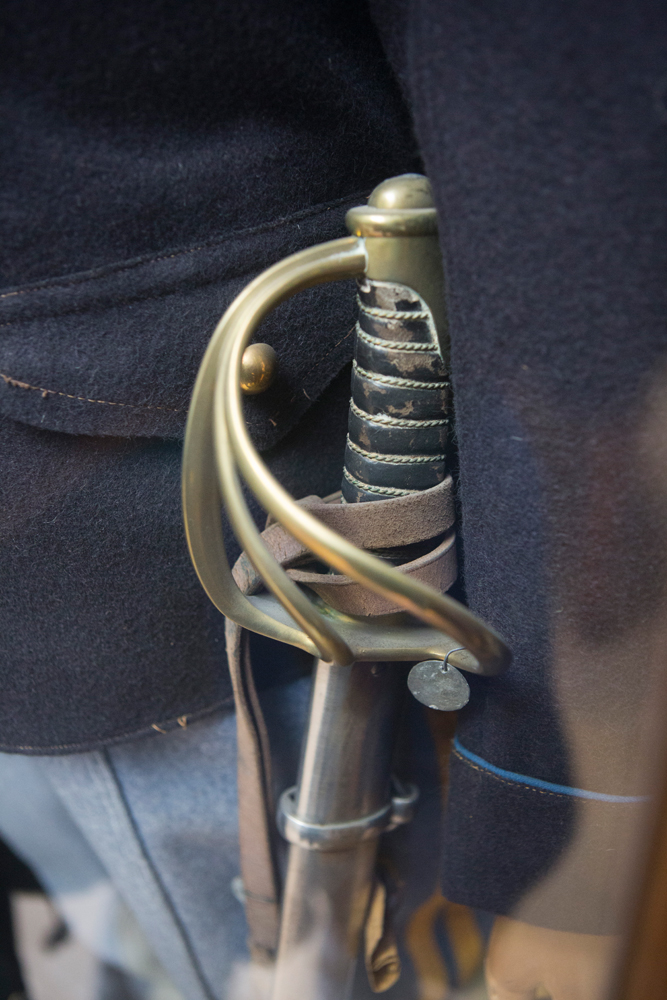
1802-1884 pattern Train Saber
This is a modification of the Montmorency Saber. The lower scabbard band is absent and the upper one now has both loose ring and mortise.
Total weight, scabbard included : 2.165 kg
This saber was no longer in use as of 1910.
1852-1888 pattern Train Saber
This is a modification of the An XI pattern Heavy Cavalry Saber. The hilt has three bars, the fourth having been cut off. The scabbard has but one band, with both loose ring and mortise.
Total weight, scabbard included : 1.854 kg
Total length : 105 cm
1888 pattern Train Saber
This model is identical to the pattern 1852-1888 Train Saber, but the hilt shows no hint of a fourth bar.
Total weight, scabbard included : 1.854 kg
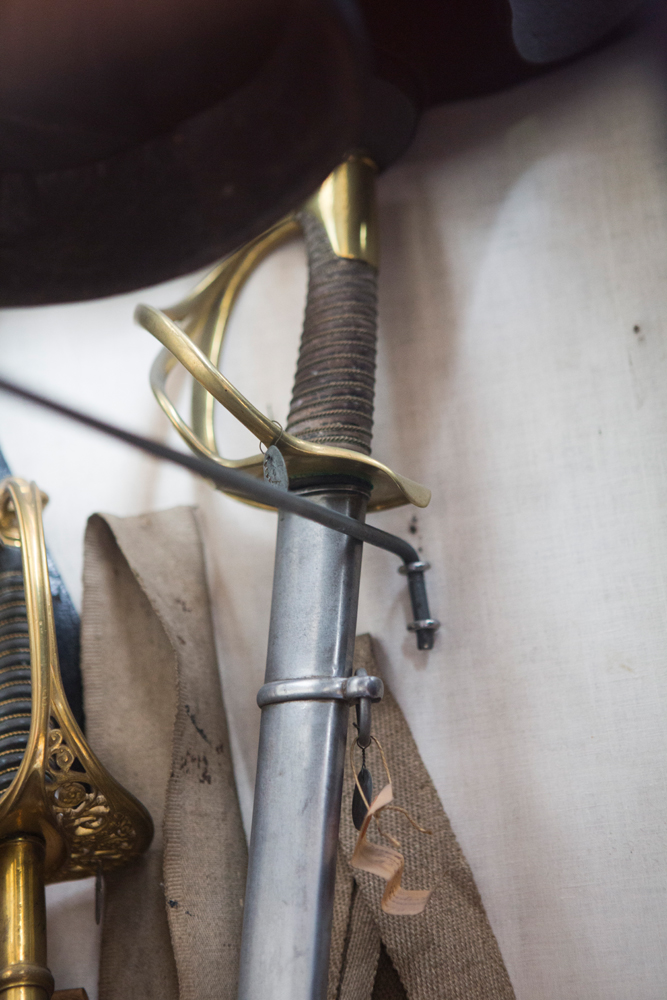
In 1893, these models were further modified, as a test into the :
1822-1883 pattern Light Cavalry Saber modified 1894
This it the 1822-1883 pattern Light Cavalry Saber, with some slight modifications :
Total weight 2.005 kg
rem : by 1910, the finger ring was abandoned.
1822-1873 pattern Guide Saber modified 1894
This is the 1822-1873 pattern Guide Saber, modified in the same way as the 1822-1883 pattern Light Cavalry Saber modified 1894, but the grip is 13 cm long.
Total weight 2.090 kg
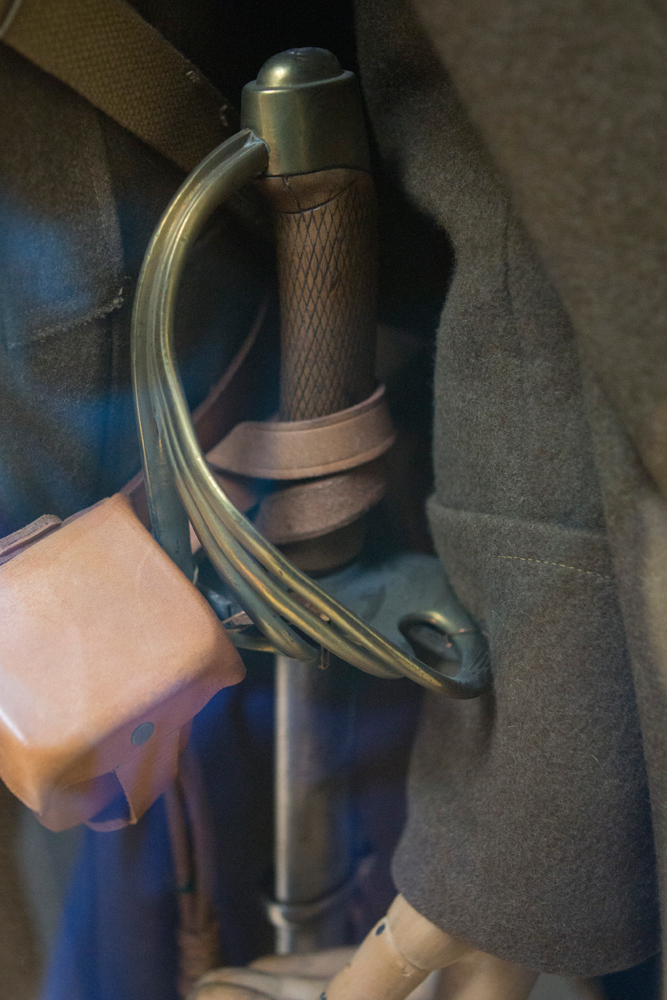
rem : by 1910, the mortise was no longer found on the scabbard band.
Rapier-Saber
The regent's decree of July 14th 1832 attributed a hussar's saber with iron guard to the Civic Guard's cavalry. This was later replaced by the army's cavalry saber. As of around 1905, the Civil Guard's chasseurs à cheval received a Rapier Saber.
Straight blade, 90cm in length and of diamond section. Steel bowl guard, chiseled and pierced for decoration and for a mortise, next to the pommel. Reinforced pommel. Wooden, leather covered, grip bound with twisted steel wire. Steel scabbard, with a single band sporting both ring and mortise.
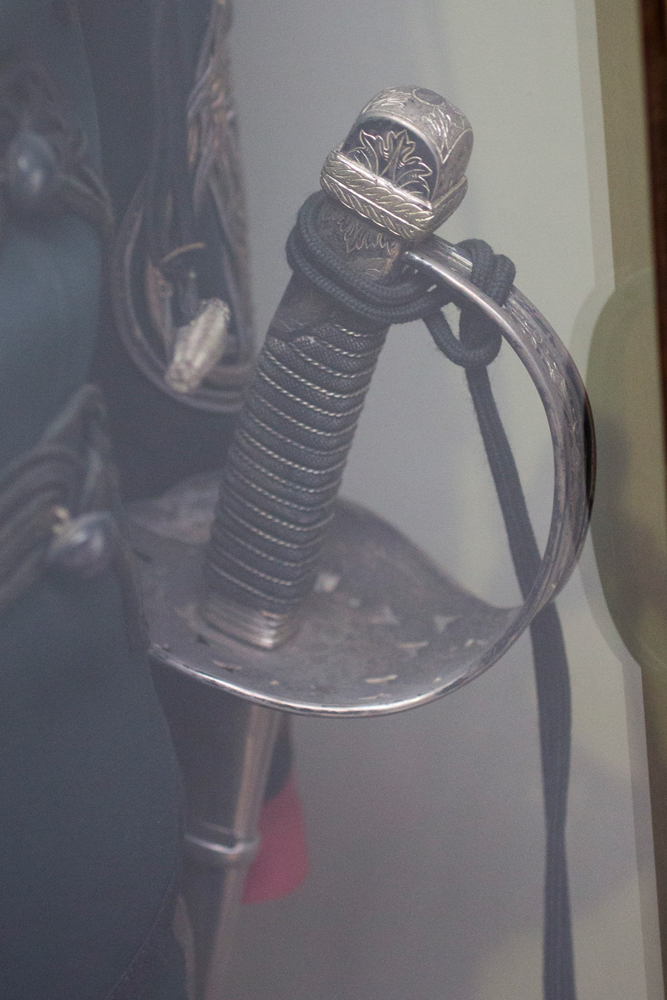
This sword was in use by the Civil Guard's chasseurs à cheval as of around 1905.
1852-1920 pattern Heavy Calvalry Saber
This saber is a further modification of the 1852 pattern Cuirassier saber.
Straight, double-edged, double fullered blade, 88 cm long.
Total weight, scabbard included :
Total length : 108 cm
Standard Issue Cavalry Sabers : Officer's swords
Officers were attributed the same models as troopers, though officer's sabers were often lighter and better finished. Hilts showed some decorations and were in gilt copper or browned and chiseled chrysocale. The grip is in horn or wrapped in fine veal leather, bound with gilt silver wire. The scabbard is of polished steel, most often without wooden inserts.
Officers from the chasseurs à cheval often had scabbards with gilt copper bands and rings while Guide officers used the Cuirassier's officer's sword until July 24th 1843, at which time they switched to the French 1822 pattern de ligne cavalry saber.
The directive of December 18th 1830 attributed a curved saber with ivory hilt to staff officers. As of February 19th 1832, this was replaced by the Montmorency saber. Generals and colonels in charge of provinces carried the same sword as of October 18th 1832. This saber was later replaced by the light cavalry saber.
As an illustration, here is a Dutch Light Cavalry model nb 3 and a Montmorency 1802 pattern Officer's Sword.
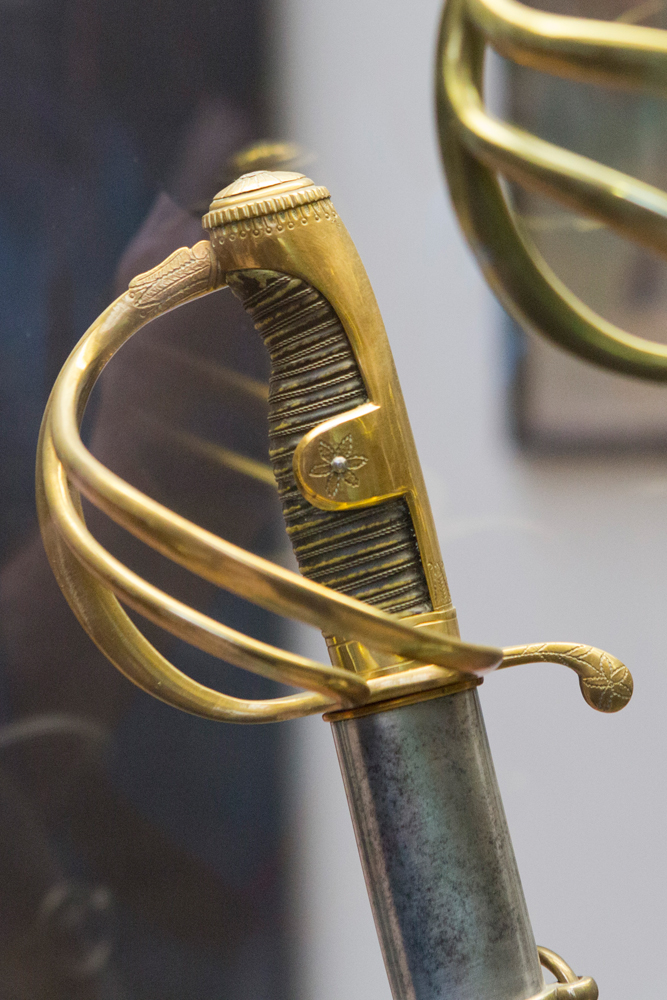
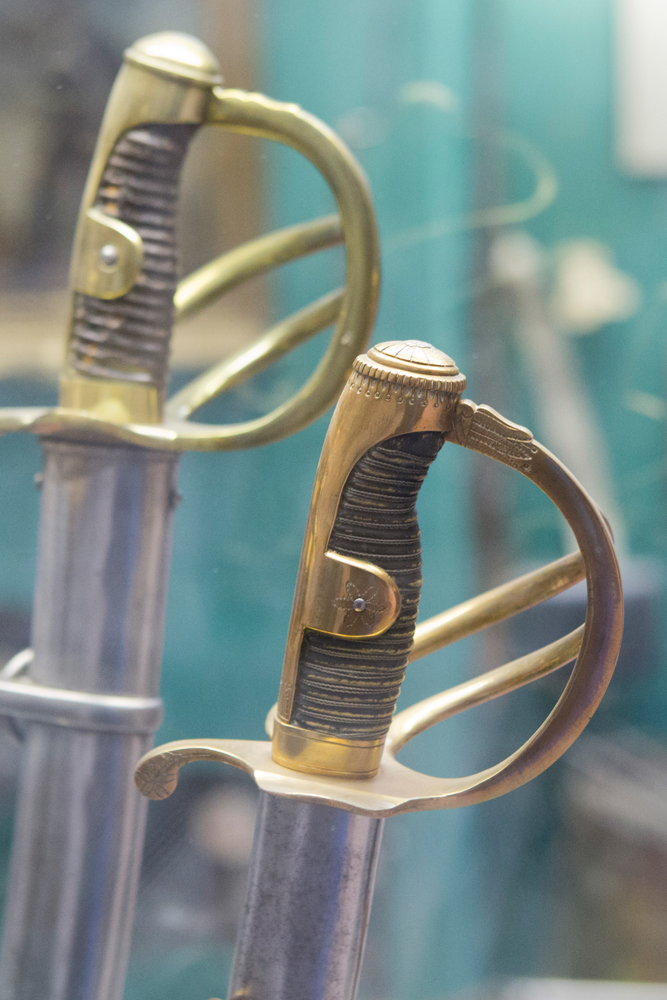
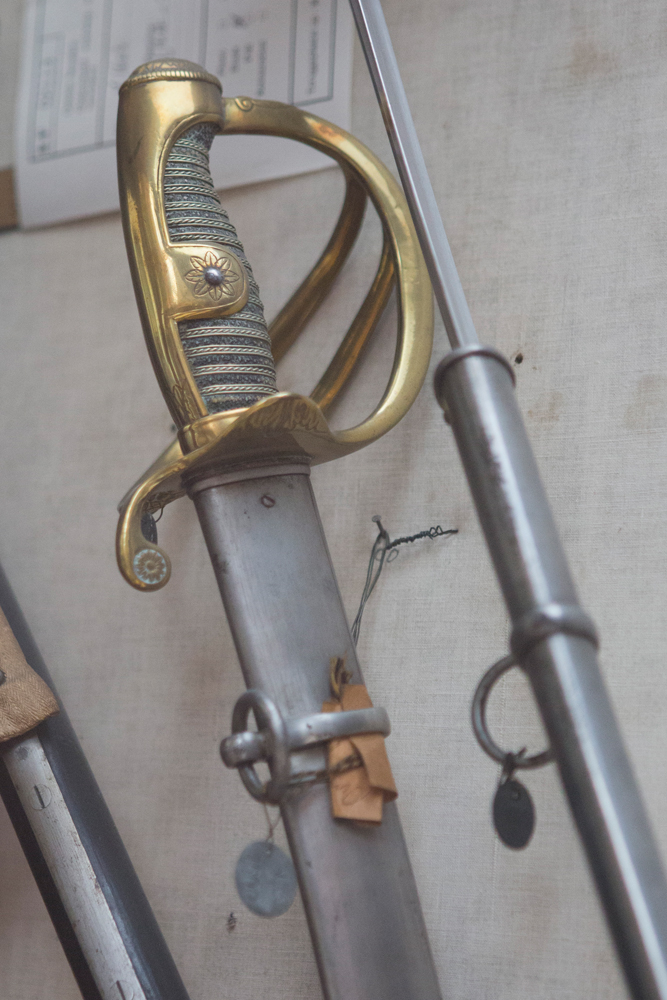
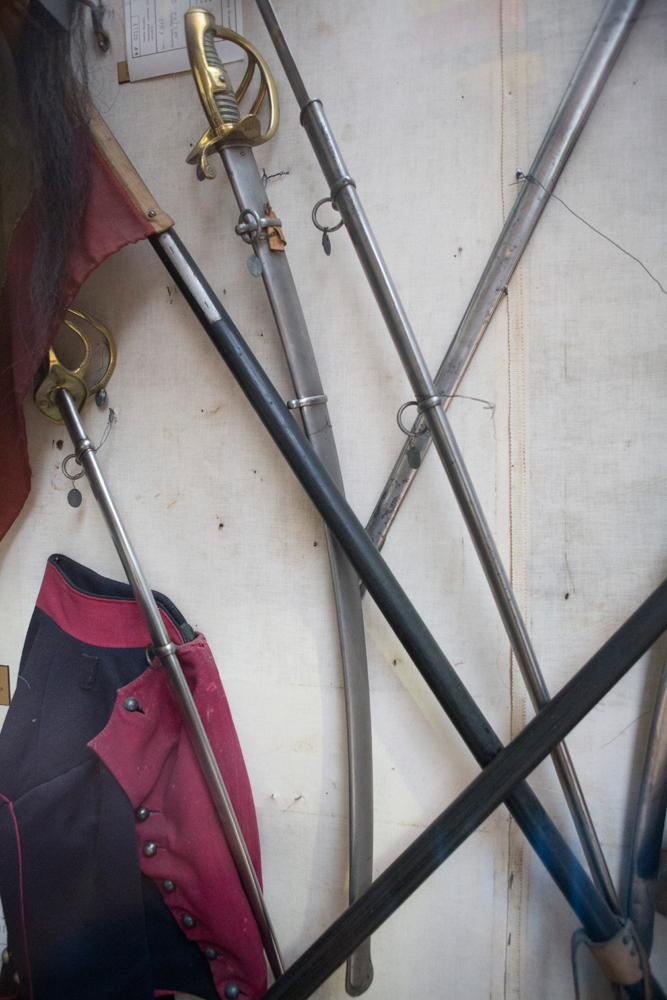
The only officer's sword without a trooper's equivalent is the :
Turkish Saber for Military Intendants
The royal decree of June 18th 1836 describes a Turkish-style saber for intendants, but gives precious little information about it. The blade is curved, the grip in ivory, with a Turkish-style guard and a steel chain going from hilt to pommel. The grip is pierced to allow for the sword knot to be attached. Steel scabbard with two bands and steel shoe.
Period documents show that such swords were also worn by generals and Light Cavalry officers.
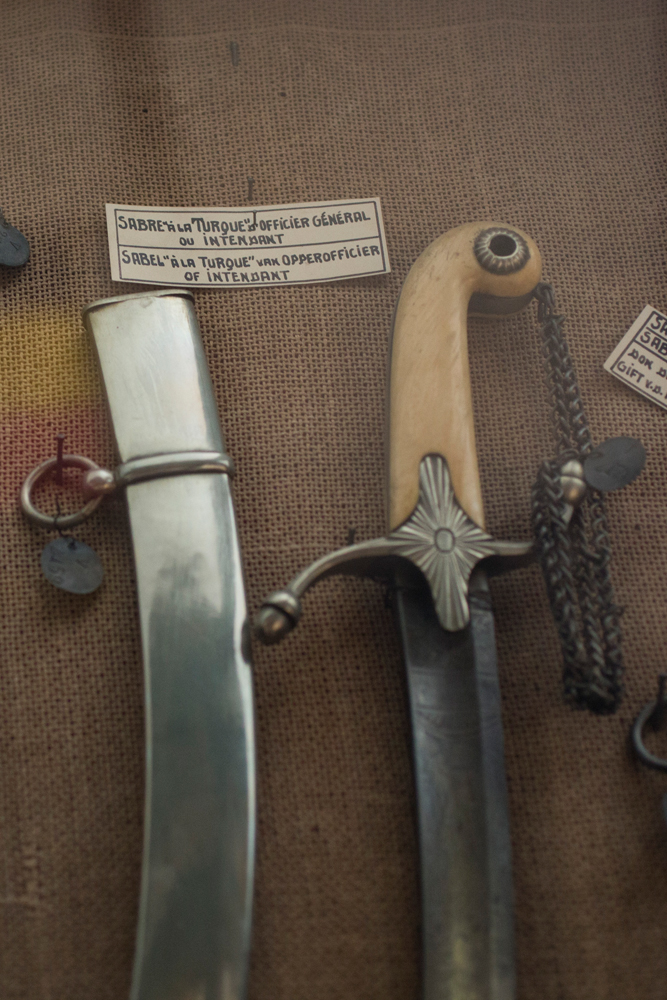

This saber was replaced on June 6th 1847 by the 1st general model smallsword.
Some officer's swords are barely documented. Among them a hussar sword with ivory grip attributed to the general inspector of the customs services and several other customs officers by the royal decree of June 14th 1832. This saber had a single bar guard 'of the German type'.
Sources
L Leconte's 'Les armes portatives des troupes belges, de 1830 à 1910'
A very specific and precise article by Freddy Piron, 'De Kurassiers en hun sabels' in Militaria Belgica 1999-2000
Richard Dellar's beautiful 'The British Cavalry Sword 1788 1912 : Some new perspectives'